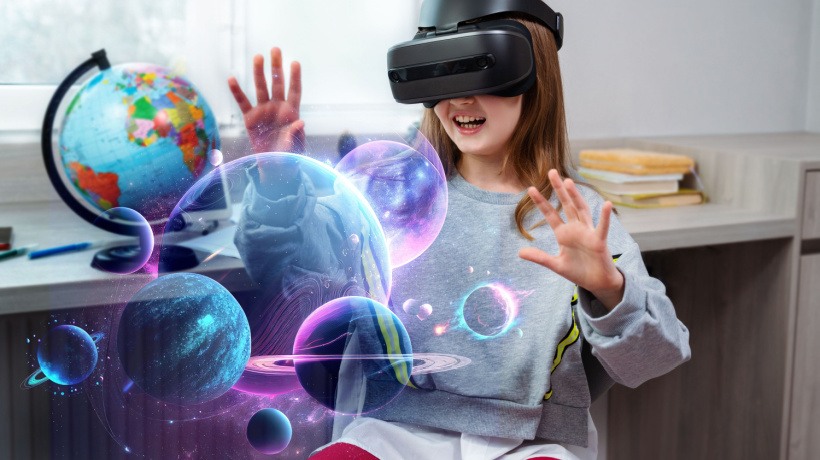CGKY News Hub
Your go-to source for the latest insights and trends.
Augmented Reality: Where Fantasy Meets Reality
Explore how augmented reality blurs the lines between fantasy and reality, transforming our world into a thrilling playground of imagination!
How Augmented Reality is Transforming Entertainment and Gaming
Augmented Reality (AR) is revolutionizing the landscape of entertainment and gaming by creating immersive experiences that blur the lines between the digital and physical worlds. Through applications and devices that utilize AR technology, players can now engage in gameplay that feels more interactive and realistic than ever before. For instance, popular games like Pokémon GO have demonstrated how AR can encourage players to explore their surroundings in pursuit of virtual creatures, leading to an unprecedented blend of worlds. This unique approach not only enhances the gaming experience but also transforms how developers conceive and design their games.
Moreover, the impact of AR extends beyond traditional gaming. It has found its way into various entertainment sectors, such as live events, interactive storytelling, and social media. Enhanced reality experiences allow audiences to interact with content in ways previously unimaginable, creating a more engaging platform for storytelling. The integration of AR technology in films and theatre, for example, offers viewers an opportunity to participate actively in the narrative, making it feel personal and tailored. As AR continues to advance, it promises to set new standards for entertainment and gaming, captivating audiences with innovative experiences that go beyond conventional methods.

The Science Behind Augmented Reality: Bridging the Gap between Digital and Physical Worlds
Augmented Reality (AR) represents a significant advancement in the intersection of technology and the physical world. By overlaying digital information—such as images, sounds, or sensory feedback—onto our real-world environment, AR creates a rich, immersive experience that enhances our perception and interaction with reality. This innovative technology relies on sophisticated computer vision, simultaneous localization and mapping (SLAM), and depth tracking to accurately align digital objects with their physical counterparts. As a result, AR not only bridges the gap between the digital and physical realms but also opens up new possibilities for various applications, from entertainment and gaming to education and industrial training.
Another key aspect of the science behind Augmented Reality is its reliance on user interaction. AR systems utilize sensors and cameras to detect user movements and gestures, facilitating a seamless interaction with digital content. This interactivity allows users to manipulate digital objects in real time, creating a dynamic user experience. For example, in retail settings, AR can enable customers to visualize how a piece of furniture might look in their home or how clothing fits without trying them on physically. As the technology continues to evolve, we can expect even more innovative applications that will further blur the lines between our digital and physical worlds.
What are the Most Exciting Applications of Augmented Reality in Everyday Life?
Augmented Reality (AR) is transforming the way we interact with the world around us, making everyday experiences more immersive and engaging. One of the most exciting applications of AR can be seen in the realm of retail shopping. Retailers are incorporating AR technology to allow customers to visualize products in their own environment before making a purchase. For instance, IKEA's AR app lets users see how furniture would look in their home, helping them make more informed decisions. This not only enhances the shopping experience but also reduces the likelihood of returns, benefiting both consumers and businesses alike.
Another groundbreaking application of AR is in the field of education. Educational institutions are beginning to adopt AR to create interactive learning experiences that captivate students' attention. For example, applications like Google Expeditions allow students to embark on virtual field trips, exploring historical sites or even the solar system from their classroom. This transformative approach to learning fosters greater engagement and helps students grasp complex subjects in a more intuitive manner. As AR technology continues to evolve, its potential to revolutionize education and other aspects of everyday life is truly limitless.